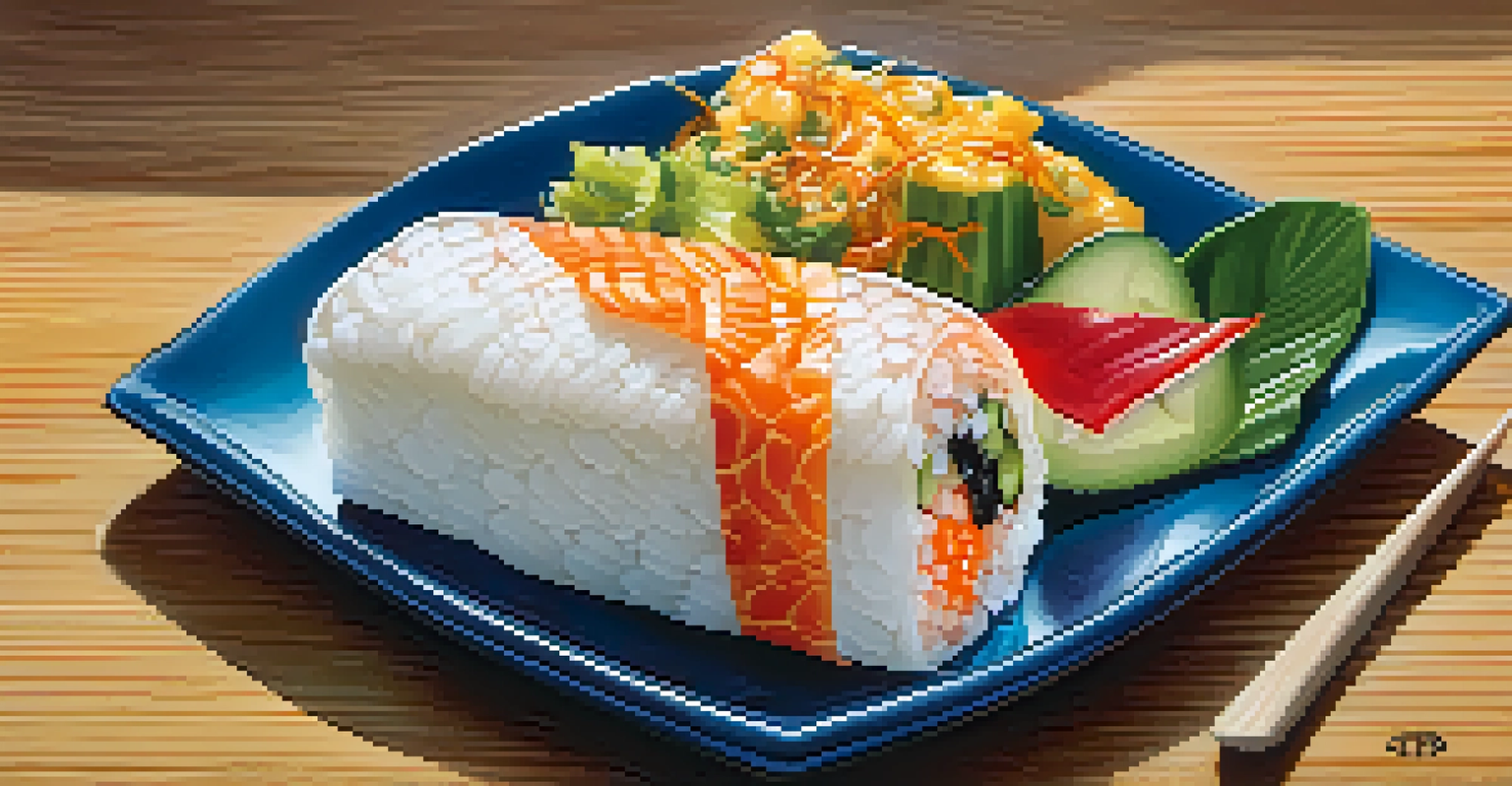Culinary Influences: How Culture Shapes Local Cuisine

The Connection Between Culture and Cuisine
Cuisine is often a reflection of the culture from which it originates. Just as language and customs are passed down through generations, so too are culinary practices that define a community's identity. Each dish tells a story, rooted in history, geography, and the people who create it.
Food is our common ground, a universal experience.
For example, the use of spices in Indian cuisine is not just about flavor; it reflects the country's agricultural diversity and trade history. Similarly, the emphasis on fresh ingredients in Mediterranean diets showcases the region's climate and lifestyle. This interconnection between culture and food is what makes each cuisine unique.
When you savor a traditional meal, you're not just enjoying a dish; you're experiencing the cultural narratives that shaped it. Understanding this link enhances our appreciation for food and the communities it comes from, reminding us that every bite has a story.
Historical Influences on Local Cuisine
Throughout history, migrations, wars, and trade have significantly influenced local cuisines. For instance, the introduction of tomatoes and potatoes to Europe from the Americas transformed many traditional dishes. Such exchanges highlight how food evolves over time, adapting to new ingredients and culinary techniques.

Consider the influence of the Silk Road, which facilitated not just trade but also the sharing of culinary practices between Asia and Europe. Spices, herbs, and cooking methods traveled alongside goods, enriching local cuisines with new flavors and ideas. This historical perspective reveals how interconnected our food systems are.
Cuisine Reflects Cultural Identity
Culinary practices are deeply intertwined with cultural heritage, showcasing the history and values of the communities from which they originate.
By understanding these historical influences, we can appreciate the complexity of modern cuisine. It showcases the resilience and adaptability of cultures as they incorporate new elements while maintaining their unique identities.
Regional Ingredients: A Culinary Signature
Local ingredients play a pivotal role in defining a region's cuisine. The availability of certain foods shapes the dishes that communities create. For instance, coastal regions often feature fresh seafood, while mountainous areas might rely on hearty grains and meats.
The discovery of a new dish does more for the happiness of mankind than the discovery of a star.
Take the example of Italian cuisine, where each region boasts its own specialties based on local produce. In Tuscany, the use of olive oil is prominent, while in Bologna, you'll find rich meat sauces. This not only highlights the diversity within a national cuisine but also emphasizes the importance of local agriculture.
Embracing regional ingredients not only supports local economies but also fosters a sense of community. When we dine on locally sourced dishes, we're participating in a tradition that honors the land and its resources, creating a connection between food and place.
Cultural Traditions: Recipes Passed Down
Culinary traditions often involve recipes that have been handed down through generations. These recipes carry not just ingredients but also the stories, techniques, and values of a culture. Cooking together can be a way for families to bond and pass on their heritage.
For example, in many cultures, the preparation of certain dishes is tied to festivals or family gatherings. The making of tamales in Mexican culture, for instance, is often a communal activity during holiday celebrations, strengthening familial and cultural ties. Such practices ensure that culinary knowledge is preserved and cherished.
Local Ingredients Shape Dishes
The availability of regional ingredients significantly influences local cuisines, creating unique flavors that honor the land and its resources.
As we explore these traditions, we realize that food is more than sustenance; it's a vessel for cultural heritage. By participating in these culinary rituals, we connect with the past and foster a sense of belonging in our communities.
Modern Influences: Globalization and Fusion Cuisine
In today's interconnected world, globalization has transformed how we experience cuisine. The ease of travel and communication allows for culinary ideas to cross borders, leading to the rise of fusion cuisine. This trend blends elements from different cultures, creating exciting new dishes that reflect our global society.
Think of sushi burritos or Korean tacos; these innovations showcase how chefs are creatively merging flavors and techniques. While some purists may resist these changes, fusion cuisine serves as a celebration of diversity and culinary creativity. It illustrates how food continues to evolve in response to cultural exchanges.
However, it's essential to approach fusion cuisine with respect for the original traditions. By honoring the roots of each dish, we can create a culinary landscape that embraces innovation while still recognizing the significance of cultural heritage.
The Role of Religion in Shaping Cuisine
Religion often plays a crucial role in shaping dietary practices and, consequently, local cuisine. Many cultures have specific food laws or restrictions that are deeply rooted in their religious beliefs. For example, kosher dietary laws in Judaism dictate what foods can be consumed and how they must be prepared.
Similarly, in Hindu culture, the practice of vegetarianism is prevalent due to the belief in ahimsa, or non-violence. This has led to a rich array of vegetarian dishes that showcase the diversity of flavors and ingredients available. Understanding these dietary laws can enhance our appreciation for the creativity involved in crafting meals within these frameworks.
Globalization Fosters Culinary Fusion
Globalization has led to the emergence of fusion cuisine, blending diverse culinary traditions while highlighting the importance of respecting original cultural practices.
As we explore the intersection of religion and cuisine, we find that food can serve as a means of expressing faith and community. Celebratory meals during religious holidays, such as Ramadan iftar meals or Christmas feasts, bring people together and foster a sense of belonging.
Food as a Reflection of Identity and Community
Food is often a reflection of personal and communal identity. For many, the flavors and dishes of their childhood evoke memories of family gatherings and cultural heritage. These connections make cuisine a powerful symbol of belonging and identity.
Take, for instance, the significance of barbecue in Southern American culture. It's not just about the food; it's about the traditions, stories, and gatherings that revolve around it. The ways in which families prepare and share meals can become a hallmark of their identity, passed down through generations.

In this sense, food becomes a way to celebrate individuality while honoring community ties. By sharing our culinary traditions, we not only preserve our heritage but also invite others into our stories, creating a tapestry of diverse experiences that enrich our understanding of one another.